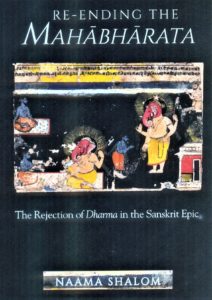
Naama Shalom, Re-ending the Mahabharata: The Rejection of Dharma in the Sanskrit Epic. Albany: State University of New York Press, 2017. 266 pages.
This is an important work, being the first study to focus solely on how the Mahabharata ends. Naama Shalom’s thesis is that instead of extolling Dharma—the general presumption—the last book actually denounces it in the persona of Yudhishthira. She uses the word garh (condemn) as a “Mahabharata search engine” to achieve three goals: unravel the thematic structure; survey its doubts about dharma; and define how dharma operates in different contexts. Exploring the paradox of dharma’s “garhification” (denunciation) is the agenda.
Shalom shows how re-tellers of the epic altered the ending to provide a pleasant closure. Of them, only three epitomes, all medieval, deal with the ascent to heaven: Kshemendra, Amarachandra, and Agastya in the eleventh, thirteenth, and fourteenth centuries CE. Earlier adaptations neglect the last book, possibly because it is deemed too unsettling. She analyzes the stance adopted by the three Kashmiri Sanskrit aestheticians Anandavardhana, Abhinavagupta, and Kuntaka (ninth to eleventh centuries CE). The first two stress that the ending creates the rasa (emotional experience) of shanti through rejection of the rasas of heroism, wonder, and horror created earlier, thus dissociating it from the rest of the epic. Kuntaka condemns the ending as a prime example of a faulty conclusion that future poets should alter.
Dharma is referred to by both Bhıshma the patriarch and Yudhishthira the son of Dharma as very subtle, as secreted within a cave, hence difficult to determine. At crucial junctures there is doubt about what it is. Shalom does not explore the fact that only three persons are never troubled by such doubts: Krishna, Dharma’s avatar Vidura, and Bhıma. The first two die miserable deaths. Yudhishthira abandons dying Bhıma but will not abandon a dog. Then he rejects Svarga, electing to stay in horrific Naraka with the siblings and the wife he had abandoned. The confusion this ending creates, Shalom argues, has to date not been explored.
Reviewing the research, she concludes that the ending formed part of the epic from at least the third century CE as in the damaged Spitzer Manuscript where the seventeenth and eighteenth serials in the parva-list are intact, though the Mahāprasthānika and Svargārohaṇa parvas are not mentioned. Here she refers to the initial Jaya epic of 8,800 verses, while in fact this is the number of riddling slokas.
She claims to have discovered “a hitherto unknown retelling” entitled Bhārataprabandha by the Malayali poet Melputtur Narayana Bhatta (ca. 1550–1650 CE), which includes the Svargārohaṇa. However, Kalamandalam Eswaranunni, A.Harindranath and A.Purushothaman have edited scholarly editions with detailed explanations and introductions, self-published from 2014 to the present. Bhatta is the only re-teller who has Yudhishthira denounce Indra, Dharma, and the other gods for the illusion of hell.
Shalom concludes that the epic does in fact reach an organic resolution, being a tapestry into which many “garh” episodes are interwoven. Part of this tapestry is the disrupted sacrifice motif introduced in the beginning. The core of the thematic matrix is the examination of what constitutes right action through experimentation with the concept of dharma. She argues that finally Dharma turns in on itself through self-denunciation (Dharma’s son condemns Dharma) voiced by its protagonist Yudhishthira, which scholars have previously overlooked.
Is a later, more “sophisticated” audience uncomfortable with the unabashed existential stance of Vyasa instead of appreciating its nuances, as Shalom claims? Perhaps not. Her study is heavily influenced by Emily T. Hudson’s one-sided Disorienting Dharma: Ethics and the Aesthetics of Suffering in the Mahabharata (Oxford University Press, 2013), showing no awareness of James Hegarty’s balanced exploration of the topic in Religion, Narrative and Public Imagination in South Asia: Past and Place in the Sanskrit Mahabharata (Routledge, 2012).
Being so focused on validating her claim, Shalom overlooks the Bhārata Sāvitrī of four slokas at the end containing Vyasa’s final message. Is he a voice in the wilderness, ignored by all, shouting aloud with upraised arms “From Dharma flow Profit and Pleasure; why is dharma not practised?” In the very next verse he stresses that dharma must not be discarded; for, while joy and sorrow are fleeting, dharma and the jīva–ātman alone are eternal, not the body. The composer himself thus reasserts Dharma’s validity after its “garhification.” And a host of phantom listeners are listening, their stillness answering his cry.
This compelling work needed a good editor. The argument running to 174 pages is supplemented by 50 pages of elaborate endnotes, much of which should have been included in the text. The reader is irritated having to flip back and forth frequently between them. Moreover, there is avoidable repetition: each chapter begins with a summary and ends with a conclusion, both repeating in brief what will be/has been stated. However, Shalom’s book will stimulate fresh thinking about the enigmatic ending of the Mahabharata and as such open up fresh avenues of research.
International Journal of Hindu Studies (2019) 23:355, https://doi.org/10.1007/s11407-019-09268-x
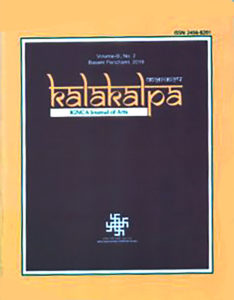
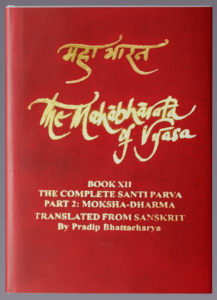 International Journal of Hindu Studies (2018) 22:523–549
International Journal of Hindu Studies (2018) 22:523–549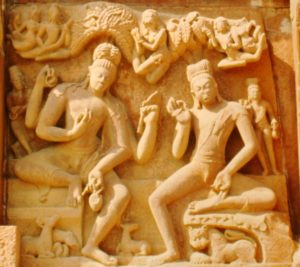
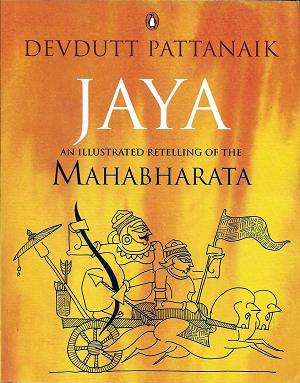 How shall vibrant shoots of the future come forth unless we go to our roots? That is why Janamejaya, king of Hastinapura, requests Vyasa, his ancestor, to tell him about his lineage. Retellings of Indian mythology have been many but for the first time we have a medical doctor ministering to the spirit by evoking archetypal memories through his retellings. Of his work, the most significant is this attempt to re-tell the Mahabharata in a new way.
How shall vibrant shoots of the future come forth unless we go to our roots? That is why Janamejaya, king of Hastinapura, requests Vyasa, his ancestor, to tell him about his lineage. Retellings of Indian mythology have been many but for the first time we have a medical doctor ministering to the spirit by evoking archetypal memories through his retellings. Of his work, the most significant is this attempt to re-tell the Mahabharata in a new way.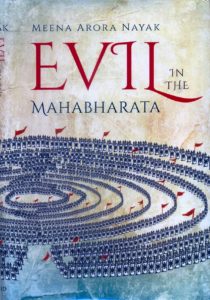 Meena Arora Nayak: Evil in the Mahabharata, Oxford University Press, 2018, pp. 355, Rs. 650/-
Meena Arora Nayak: Evil in the Mahabharata, Oxford University Press, 2018, pp. 355, Rs. 650/-